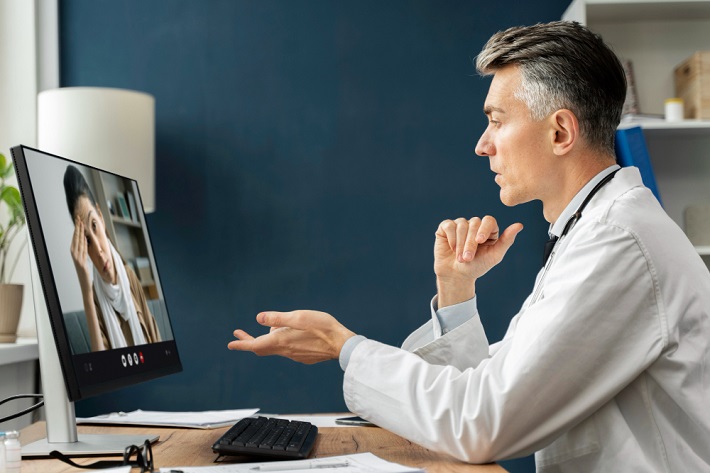Introduction to Remote Triaging
What is Remote Triaging?
Remote triaging is a modern healthcare approach that uses digital tools to assess, prioritize, and manage patients remotely. Unlike traditional triaging done in hospitals or clinics, allows healthcare providers to evaluate patients from afar, using technology to guide immediate care or schedule necessary follow-ups. By leveraging digital platforms, extends healthcare access, offering a faster, more accessible way for patients to receive medical attention.
The need for has surged, especially with the increased adoption of telemedicine. This model empowers healthcare providers to assess patient symptoms and prioritize care remotely, which can streamline workflows and potentially save lives by directing critical cases to urgent care first.
Why Remote Triaging Matters in Modern Healthcare
Modern healthcare faces numerous challenges, including resource shortages, long wait times, and an ever-increasing patient load. addresses these issues by allowing preliminary patient assessments outside of the traditional hospital setting. This can be especially valuable in rural or underserved areas where access to healthcare facilities is limited. By making healthcare more accessible and efficient, is an innovative solution that aligns with the broader movement toward digital health.
Historical Background of Remote Triaging

The Evolution of Triaging Systems
Historically, triaging started as an emergency response method in military settings, designed to categorize patients based on the urgency of their injuries. Traditional triaging has since become a staple in hospitals worldwide. However, as healthcare systems grew and technology advanced, emerged as a way to bring healthcare to patients wherever they are.
Technology-Driven Transformation
The advancement of telehealth and digital health solutions laid the groundwork. The integration of AI, telecommunication tools, and wearable devices has transformed how healthcare providers assess and manage patient care. These technologies have paved the way for a new model of healthcare that prioritizes convenience and accessibility.
How Remote Triaging Works
Core Components of Remote Triaging Systems
Remote triaging relies on a combination of applications, online platforms, AI algorithms, and communication tools. Healthcare providers use these platforms to communicate with patients, gather information on symptoms, and make initial assessments. Additionally, wearables and health apps provide real-time data, enabling more accurate remote evaluations.
The Patient’s Journey: From Initial Symptoms to Triage Assessment
A patient’s journey begins with a digital assessment, often through an app or online form, where they report symptoms. The system then evaluates the data, guiding patients on whether to self-care, schedule a telemedicine consultation, or seek urgent care. This journey significantly reduces the burden on healthcare facilities, as only high-priority cases need in-person visits.
Key Technologies in Remote Triaging
Artificial Intelligence and Machine Learning
AI and ML are integral to helping to interpret patient data, recognize patterns, and suggest appropriate actions. For example, AI algorithms can analyze symptoms to predict possible conditions, giving patients and providers valuable insights. AI in improves both the speed and accuracy of assessments.
Wearable Health Devices
Devices like smartwatches track health metrics such as heart rate, sleep patterns, and physical activity. These metrics are vital for as they offer real-time data that healthcare providers can use to make informed decisions. Wearables enhance the quality of remote assessments, making it easier to monitor patient health continuously.
Telehealth Platforms
Telehealth platforms support video consultations, messaging, and chatbots to connect patients and providers. These platforms are central to allowing providers to perform virtual assessments and respond quickly to patient needs. With telehealth, can seamlessly integrate into daily healthcare workflows.
Benefits of Remote Triaging for Patients
Increased Accessibility and Convenience
For patients, means immediate access to healthcare from the comfort of their home. This level of convenience is especially beneficial for individuals with mobility challenges or those in remote areas, as they can receive assessments without the need for travel.
Reduced Wait Times and Faster Response
Remote triaging allows healthcare providers to prioritize cases and streamline patient care. By directing non-critical cases to self-care or follow-up consultations, hospitals can reduce wait times and focus resources on urgent cases.
Improved Health Outcomes
can lead to better health outcomes by providing faster and more targeted care. When patients receive timely guidance, they’re more likely to adhere to medical advice, which ultimately leads to better management of chronic conditions and overall health.
Conclusion
Remote triaging represents a pivotal advancement in healthcare, providing patients with accessible, timely assessments while optimizing resources for healthcare providers. As technology continues to evolve, will likely become an essential component of digital health, bridging gaps in healthcare accessibility and delivering high-quality care on a global scale.
Frequently Asked Questions (FAQs)
- What is the main goal of remote triaging?
- Remote triaging aims to assess and prioritize patients remotely, ensuring that those who need urgent care receive it while others get timely guidance.
- Is remote triaging as accurate as in-person triaging?
- While remote triaging is highly effective for initial assessments, it is often used in conjunction with in-person evaluations for more complex cases.
- How does remote triaging protect patient data privacy?
- Remote triaging platforms implement strict data privacy measures, including encryption, to comply with health regulations like HIPAA and GDPR.
- Can remote triaging handle emergency cases?
- Yes, remote triaging can identify high-priority cases and recommend urgent care, ensuring that critical patients receive immediate attention.
